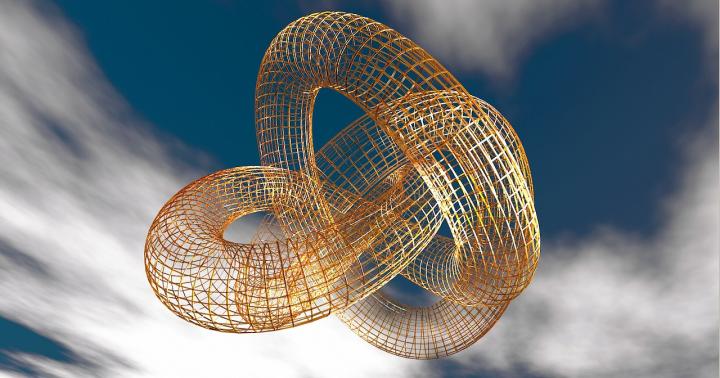The word “infinity” is intriguing, but frustrating. That’s because infinity cannot be visualized. How do you picture it? Let’s explore …
What is Infinity?
Infinity is the idea of something that has no end. Infinity does not “get larger.” Infinity is not a real number. In our world, there is nothing like this. Most things have an end, but infinity is endless. We do not go “to infinity … . and beyond!” because it doesn’t go anywhere.

And since the 2012 discovery of the large scale flat topology of space points toward the universe possibly being infinite in both content and spatial extent, it means the cosmos simply cannot be pictured in a meaningful way. We can get a mental “hold” of its components but not the Whole Thing.
We should be used to that by now. Perhaps you’ve heard about “string theory” which supposes 11 dimensions. We’re all familiar with a 3D world (height, length, depth) and the 4th dimension of linear time. But 11 dimensions? Nobody is able to picture anything that might help grasp what it means. Maybe we feel we’re not smart enough. In reality, our science teachers neglected to tell us that some things cannot be imagined.
Outside Human Experience
We can always put known shapes or colors in a new context. We could picture a purple planet with red polka dots. But when Galileo looked at Saturn’s rings in 1610 he never could figure out what he was seeing, even decades later. He thought the planet must have attached handles like a sugar bowl. It took nearly half a century before Christiaan Huygens finally got it right. That’s because it lay outside human experience. On Earth, there is no example of a ball surrounded by unattached rings.
We are all prisoners of our background and experience. The lack of previous experience explains why you cannot explain the color blue to a person born blind.

Outside Logic
Then there’s quantum theory, which has a virtual patent on the inconceivable. It reveals objects’ behaviors as neither logical nor illogical, but non-logical.
Here’s an example: An electron with two possible routes from its source to a detector may arrive without following either path. Yet experiments show that it took some path. It wasn’t any of the “possible” choices physicists could entertain. It did something else, beyond logic. We say a particle in such a situation is in a state of superposition. Yet giving it a name doesn’t mean we can imagine what’s going on. No one can.
Outside What Can Be Visualized
There are so many other ideas that can’t be visualized: The Big Bang event (which was not an explosion), curved space, black hole singularities, eternity, superpositions, and more.
Can you picture infinity? Perhaps you’ll feel better if you don’t even try!
Comments